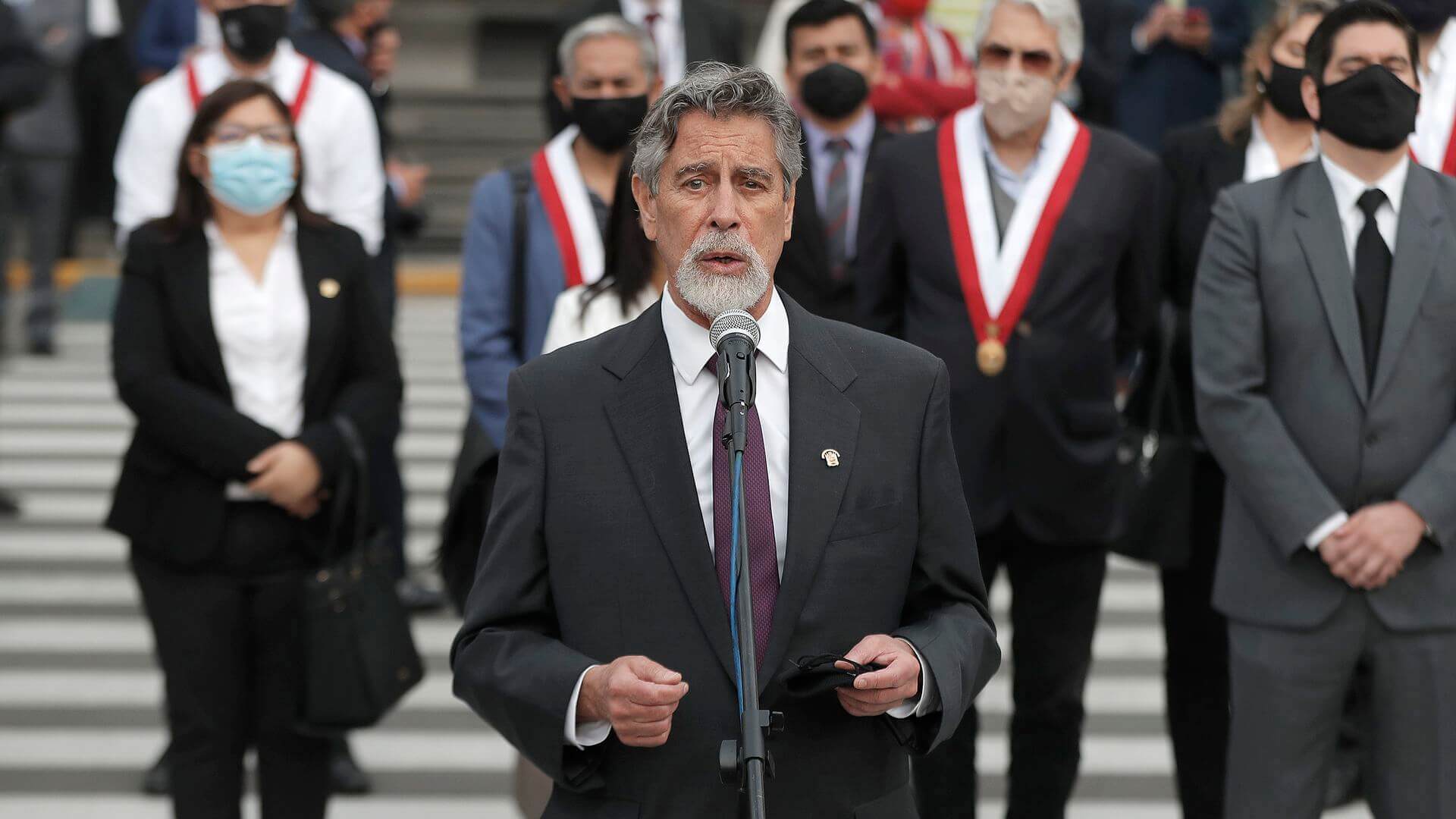Following the death of two protestors in intense and violent demonstrations against the impeachment of the now-former president Martín Vizcarra, who was impeached under highly controversial circumstances last week, interim President Carlos Manuel Merino has resigned after just five days in power. He has been replaced by Francisco Sagasti, who struck a conciliatory note by lamenting the loss of lives and, apologizing on “behalf of the state” to “all the young people who marched to defend democracy”.
On November 9, Peruvian lawmakers voted by an overwhelming majority to impeach President Martín Vizcarra on account of his handling of the coronavirus pandemic and corruption allegations that date back to his tenure as Moquegua governor from 2011 to 2014.
Vizcarra’s successful impeachment followed a similar failed procedure in September, when congressional lawmakers alleged that Vizcarra had ‘obstructed’ an investigation into a $50,000 contract for a singer hired to give “motivational talks to public employees”. That motion was dismissed quite resoundingly, with only 32 votes in favor of an impeachment, compared to 78 votes against and 15 abstentions.
The now-former president Vizcarra had previously warned that removing him from office would only lead to further chaos, and denounced political opponents for essentially turning impeachment hearings into a “custom”. He also said that it would “increase fears about the viability and institutions of Peru,” as lawmakers can presently impeach a sitting president on loosely corroborated claims of “moral incapacity”.
Indeed, this also speaks to the inherently unstable arrangement in Peruvian politics, where no political party holds a majority. In fact, Vizcarra was Peru’s vice president from 2016 to 2018 and only ascended to power when former President Pedro Pablo Kuczynski was impeached on corruption charges. In fact, every living former president of the country is being or has been investigated or charged with corruption.
Following Vizcarra’s impeachment, the head of the legislature, Carlos Manuel Merino, who belongs to the center-right Popular Action party, became the interim leader. However, his appointment stirred nationwide protests against what many saw as a political coup against Vizcarra, as a form of revenge for his decision last year to dissolve Congress and alter the selection process for judges and politicians to guard against the entry of those with criminal record. The ensuing brutal crackdown by the police led to the deaths of two young protestors, Jack Pintado and Jordan Sotelo, alongside hundreds of injuries and mysterious disappearances.
Against this backdrop, Merino was essentially compelled to step down after most of his Cabinet resigned, making way for Sagasti, who was voted in as the new leader of Congress. In his departing speech, Merino said that both he and Congress “acted within the law”, and simply wanted “what’s best for our country”.
Over 24 hours later, in his inauguration speech, Sagasti remarked, “We cannot bring these young people back to life, but we can prevent violent incidents from happening again. Also, we can decisively support the injured, some of them are grave.”
While protestors are cautious of the new administration, Sagasti is regarded as a ‘consensus builder’ and in fact voted against impeaching Vizcarra last week. However, unlike Vizcarra, he is represented by a party in Congress (the centrist Purple Party), which gives him an added layer of protection that the impeached leader did not enjoy.
Interim Leader Merino Resigns After Five Days, Giving Peru its Third President in a Week
Carlos Manuel Merino resigned amidst nationwide protests against what many saw as an orchestrated political coup to remove the now-former President Martín Vizcarra from power.
November 19, 2020

IMAGE SOURCE: BETO BARON / GETTY IMAGESNewly appointed Peruvian President Francisco Sagasti
